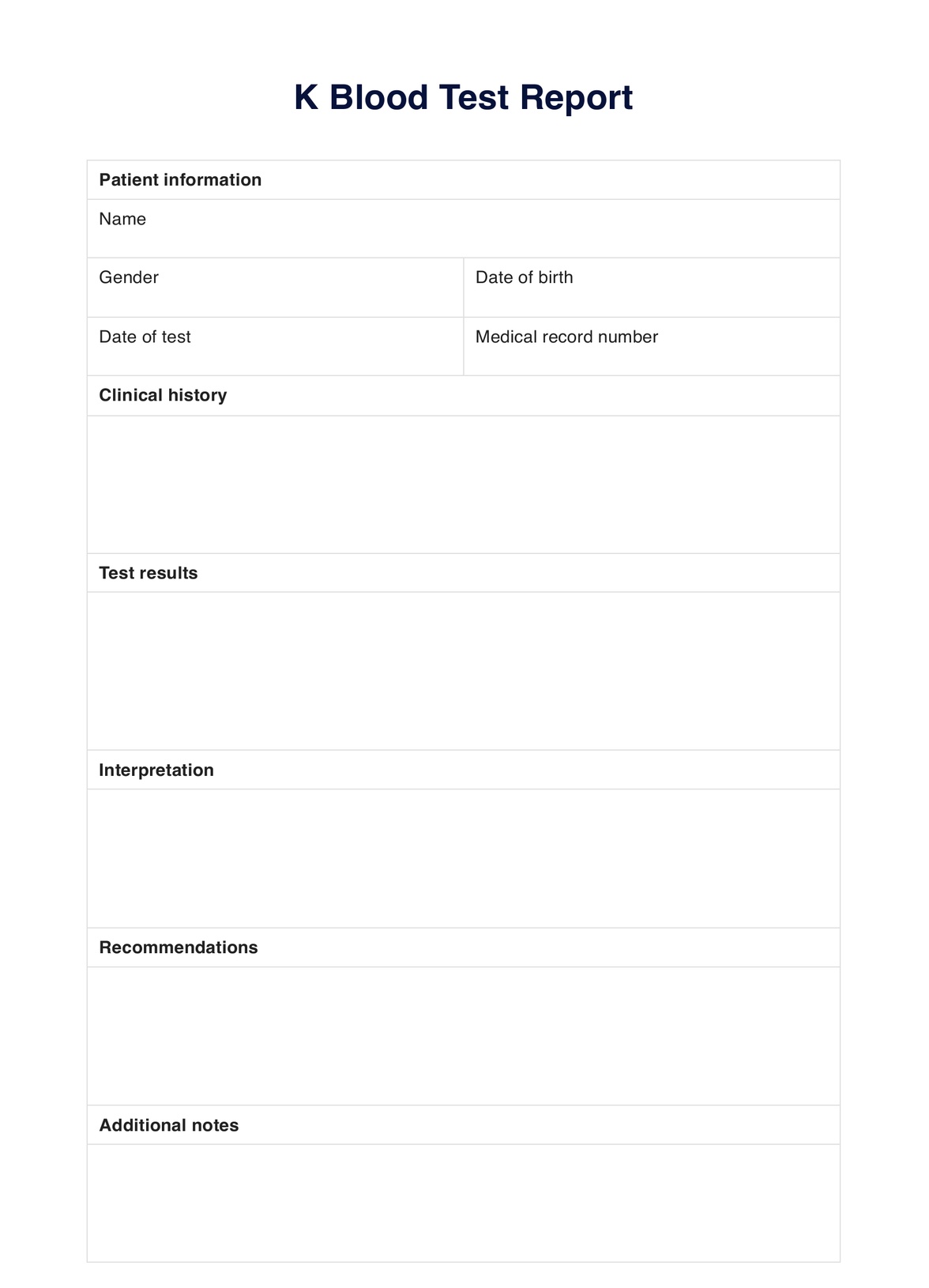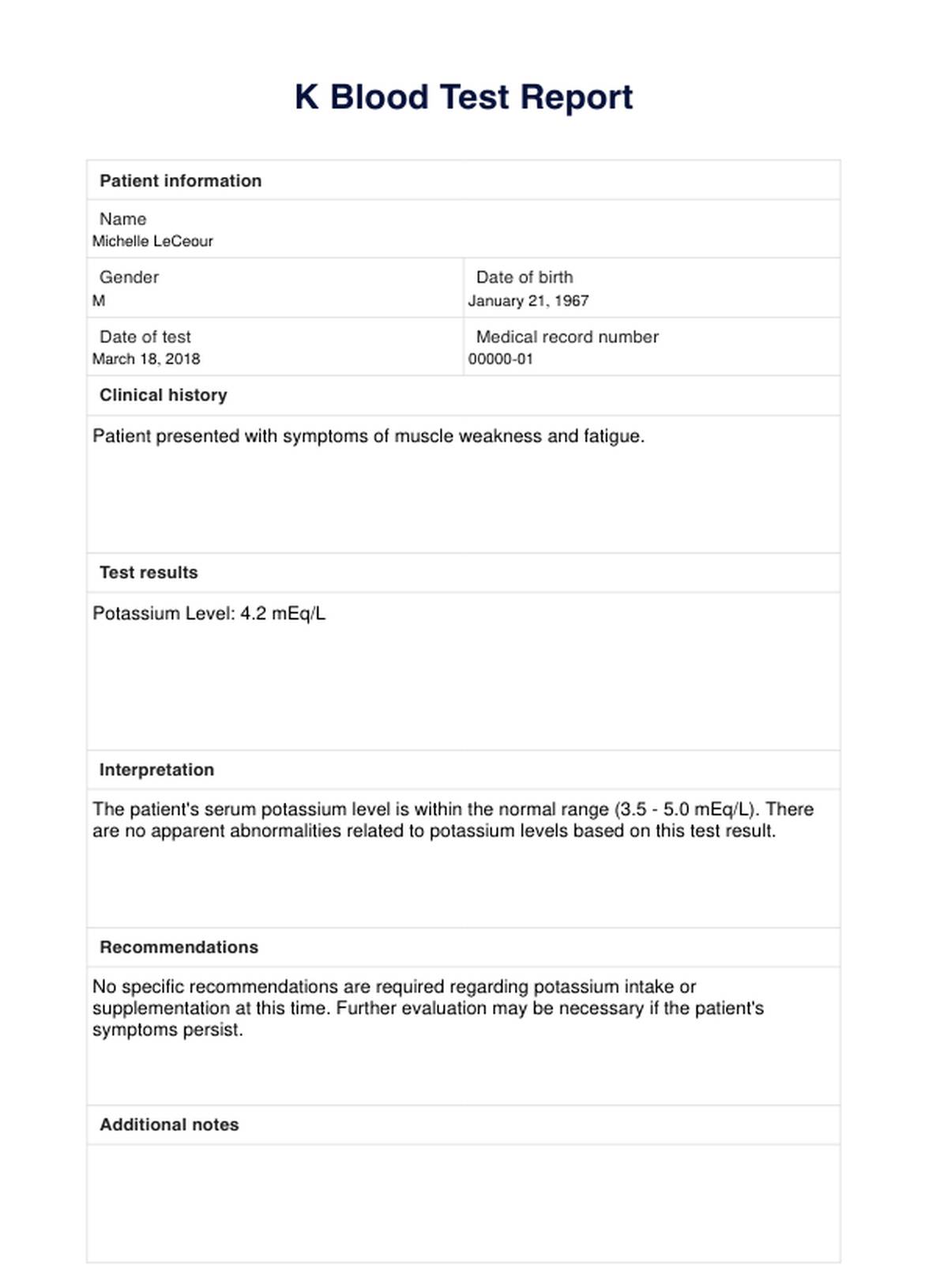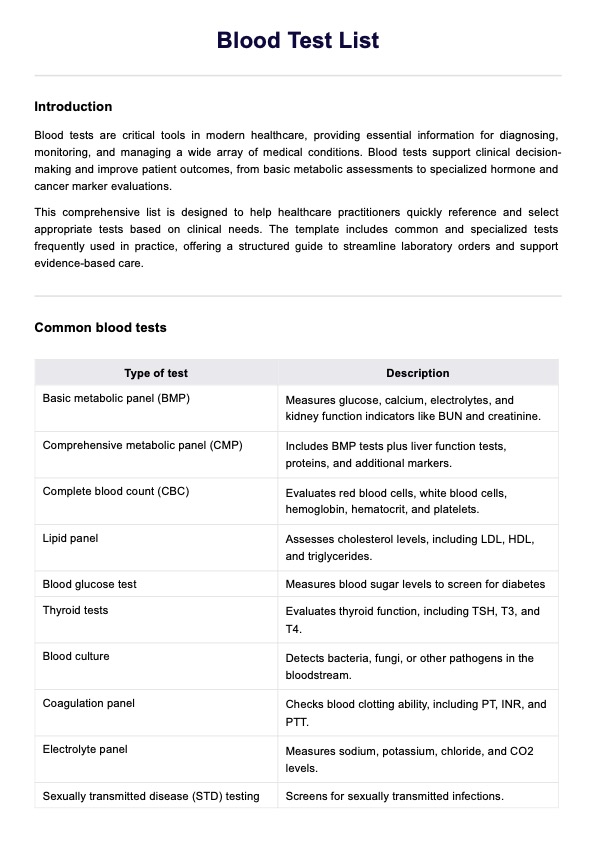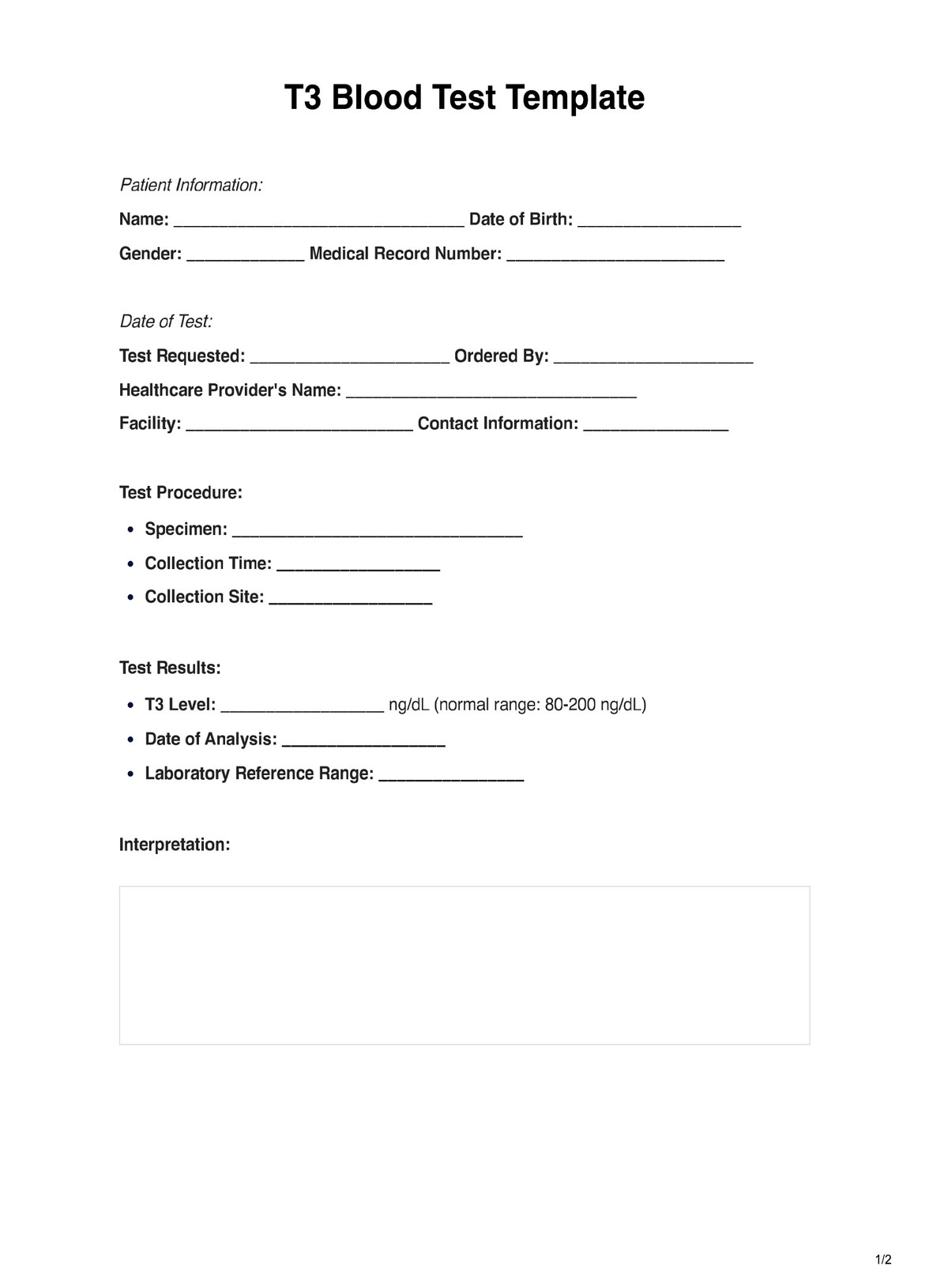K Blood
Learn about the importance of the K Blood Test and how to interpret results. Access a free template and example for your convenience.


What is a K Blood Test?
Potassium is an essential mineral that plays numerous roles in our body, such as regulating nerve and muscle function, maintaining fluid balance, and keeping our heartbeat regular. A healthy potassium level is crucial for maintaining optimal bodily functions.
Potassium levels in the body must be carefully balanced, as both high and low levels can lead to serious health problems. Low potassium levels, known as hypokalemia, may cause muscle weakness, fatigue, irregular heartbeat, and even paralysis. On the other hand, high potassium levels or hyperkalemia can also result in dangerous symptoms such as heart palpitations, nausea, weakness, and numbness.
A K Blood Test, or Potassium Blood Test, is a simple blood test that measures the amount of potassium in blood. It is often ordered as part of a routine health check or to monitor certain medical conditions. During the test, a small blood sample is drawn from a vein in the arm and sent to a laboratory for analysis. The results are usually available within 24 hours.
The results are recorded in a K Blood Test Report, which shows the potassium levels in the blood. These results are typically measured in millimoles per liter (mmol/L). The normal range for potassium levels is between 3.6 and 5.2 mmol/L, but this may vary slightly depending on the laboratory's reference range.
K Blood Template
K Blood Example
How does it work?
Our free K Blood Test Report template allows you to document your patient's K Blood Test results quickly. Follow these steps to get started:
Step 1: Access the template
Obtain a copy of the K Blood Test Report template through the provided link. You can also download it from the Carepatron app or our resources library.
Step 2: Fill in the patient's information
Enter the patient's details, such as name, date of birth, and gender. This will help identify the patient and ensure accurate results.
Step 3: Document results
Record the patient's potassium levels and any other relevant information, such as the date of the test and any symptoms reported by the patient.
Step 4: Interpret results
Compare the patient's potassium levels to the normal range and note if they fall within or outside of this range. This will help determine if further medical attention or monitoring is needed.
Step 5: Save and share
Save a copy of the completed K Blood Test Report for your electronic health records and securely share it with the patient's healthcare team or specialist if necessary.
When would you use this template?
You can use the K Blood Test Report template when conducting K Blood Tests for patients as part of their routine health assessments or to monitor specific conditions or treatments. Alternatively, you may utilize this template to:
Document baseline potassium levels
Our K Blood Test Report template allows you to easily document the patient's potassium levels, which can be a baseline for future tests. This is especially important for patients with conditions that may affect their potassium levels.
Monitor changes in potassium levels
By consistently using this template, you can track changes in the patient's potassium levels over time. This can be useful when monitoring the effectiveness of treatments or identifying potential health issues.
Keep an accurate record
Having accurate and up-to-date records of your patients' potassium levels is essential for quality healthcare. Our K Blood Test Report template helps you keep organized and detailed records that can be accessed whenever needed.
Share with patients and other healthcare providers
You can easily share the K Blood Test Report with your patients or other healthcare providers involved in their care. This allows for better communication and collaboration, leading to improved patient outcomes.
What do the results mean?
The normal range for potassium levels may vary depending on various factors. However, a general guideline is as follows:
Normal potassium levels
Normal potassium levels typically fall within the 3.5 to 5.0 millimoles per liter (mmol/L). These values can vary slightly based on age, gender, and circumstances.
Low potassium levels
Low potassium levels can indicate conditions such as hypokalemia, which may result from issues like kidney problems, excessive fluid loss, or certain medications. Further evaluation and treatment may be necessary to address the underlying cause.
High potassium levels
High potassium levels can indicate hyperkalemia, which may be due to kidney dysfunction, certain medications, or other health issues. Managing high potassium levels may involve dietary changes and medical interventions.
It's essential to note that K Blood Test results should be interpreted with other clinical data and a patient's medical history to assess their health accurately.
Commonly asked questions
Primary care physicians, nephrologists, cardiologists, or other healthcare professionals may request a K Blood Test to assess potassium levels and overall health.
K Blood Tests are typically used when there is a suspicion of potassium imbalances, kidney problems, heart rhythm issues, or other conditions related to potassium levels. They can also be part of routine health assessments for specific patient populations.
The test usually takes only a few minutes, but the process may take up to an hour, considering factors like sample collection and processing time. Results are generally available within a few days.













































































































